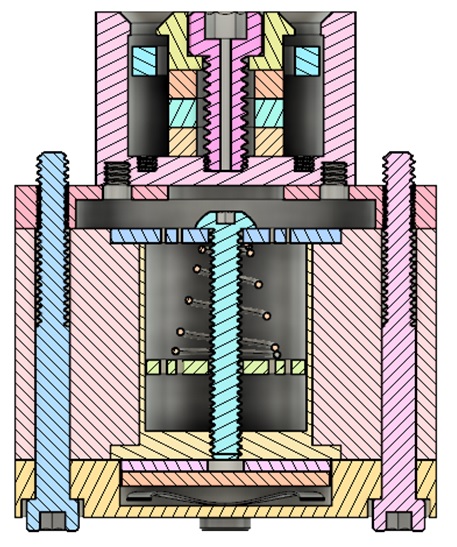Recently, I unveiled a first look at the core concept of the next gen thruster series in the works at AIS – the AIS-ADAMANT Series, which revolves around a highly modular sublimation fuel delivery system with experimental Adamantane propellant (you can read more about this design in the post HERE).
Below is the conceptual design of the first thruster in the AIS-ADAMANT Series in the works – a closed-drift anode layer ion thruster, driven directly by the ADAMANT modular sublimation fuel delivery system with solid Adamantine propellant.
Unlike more traditional closed-drift TAL Hall thruster designs, this design utilizes a more conventional industrial anode layer design, which is a simple, low-cost, and highly robust ion source capable of running many types of process gases, and is often used with reactive process gases in industry. This particular thruster is incredibly compact, with the tank and thruster less than 0.5U in depth and less than 0.25U in diameter, creating a compact, low-power, performance thruster for a range of Cubesats and larger satellites. The design will also be fully scalable from low power systems (10W) to high power (>1kW), supporting a diverse range of nanosats and small sats. And unlike conventional electric propulsion systems on the market like RF plasma, gridded ion, and Hall effect, this, as well as the other upcoming thrusters in the ADAMANT Series, will be a small fraction of the cost – thousands of dollars instead of hundreds of thousands, making this technology more readily available and accessible for any Cubesat team.
Work is already underway finalizing the designs of the fuel tank and anode layer source. The ceramic heater and Adamantane fuel for the sublimation tank, as well as the high temperature permanent magnets for the anode layer source have already been ordered and are on their way. I expect to have the first prototype built hopefully by the end of January 2021, and hit the ground running testing this new system in February 2021. Definitely the most exciting AIS thruster design yet, which can open a whole new level of low-cost, performance propulsion for Cubesats


